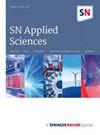Monitoring and controlling of the micro-environment in a special exhibition in the Shanghai Museum
IF 2.4
Q2 MULTIDISCIPLINARY SCIENCES
引用次数: 0
Abstract
Abstract Monitoring and controlling of the showcase environment in a special exhibition in Shanghai Museum are described in this work. The long show time started on March 2022 and ended on January 2023. Various items were shown in this exhibition with different combination modes. Air conditioners, humidifiers and three kinds of passive humidity controlling methods were applied to this exhibition. Massive raw monitoring data are given and some series of data are transformed into specific values to conduct various analyses. Factors including outdoor climate, exhibition hall structure, attendance, showcase structure, tightness and volume, monitor position and object combination modes are discussed in order to assess their effect on monitoring and controlling of temperature and relative humidity. The relation between the average value of temperature (or relative humidity) fluctuation in the whole exhibition period and the corresponding range of maximum temperature (or relative humidity) fluctuation in any 24 h is analyzed in order to obtain the probability of abnormally high fluctuation. The results show that the temperature control target is reached in general, while some unreasonable showcase structures and settings are responsible for the difficulty in monitoring and controlling of relative humidity. By conducting the analysis of big continuous historical data and learning the average values and the ranges reached, it is possible to assess the current environmental risk and predict the future risk in a simple way.上海博物馆专题展览中微环境的监测与控制
摘要:本作品描述了上海博物馆一个专题展览中展示环境的监测与控制。从2022年3月开始,到2023年1月结束。本次展览展示了各种各样的项目,并采用了不同的组合方式。本次展会采用了空调、加湿器和三种被动湿度控制方式。给出了大量的原始监测数据,并将一些序列数据转化为具体的数值进行各种分析。讨论了室外气候、展厅结构、参观人数、展柜结构、密闭性和容积、监视器位置和对象组合方式等因素,以评估其对温度和相对湿度监测与控制的影响。分析整个展期温度(或相对湿度)波动平均值与任意24 h内最高温度(或相对湿度)波动对应范围的关系,得出异常高波动的概率。结果表明,温度控制目标基本达到,但一些不合理的展柜结构和设置造成了相对湿度监测和控制的困难。通过对大的连续历史数据进行分析,学习平均值和达到的范围,可以简单地评估当前的环境风险,预测未来的风险。
本文章由计算机程序翻译,如有差异,请以英文原文为准。
求助全文
约1分钟内获得全文
求助全文

 求助内容:
求助内容: 应助结果提醒方式:
应助结果提醒方式:


